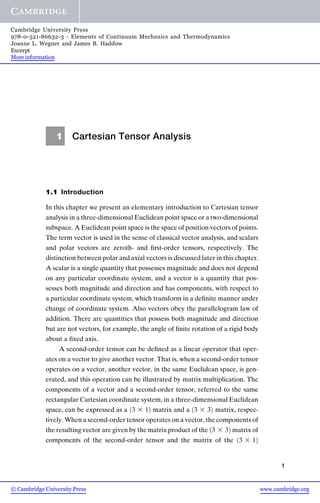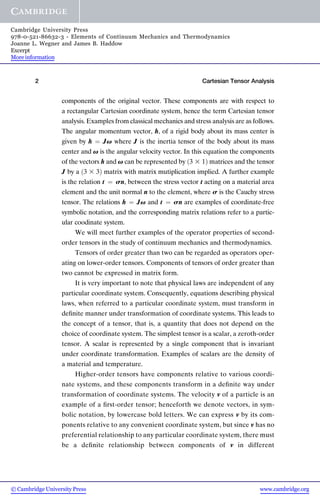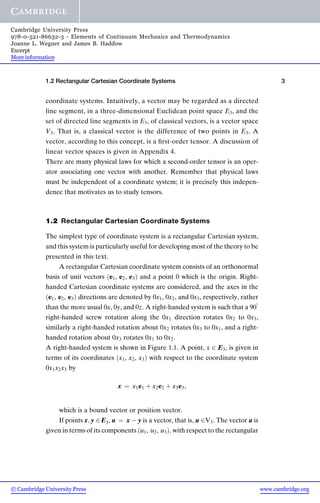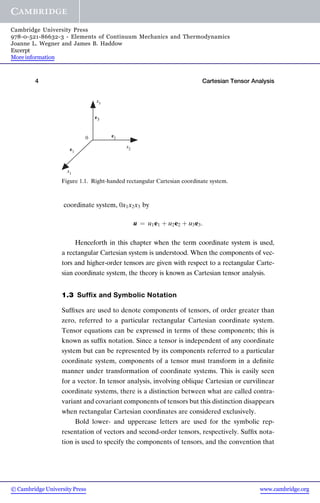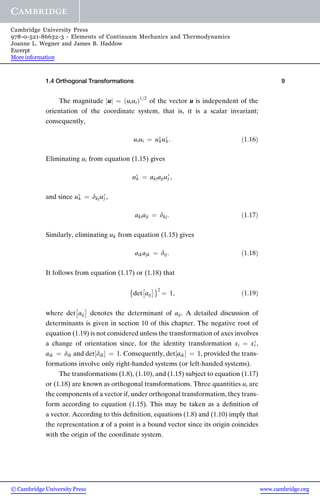This document provides an introduction to Cartesian tensor analysis. It defines scalars, vectors, and second-order tensors, and explains how they can be represented by their components in a rectangular Cartesian coordinate system. Vectors transform according to the transformation matrix between two coordinate systems. The document also introduces suffix notation for representing tensor components and the summation convention for repeated indices.
